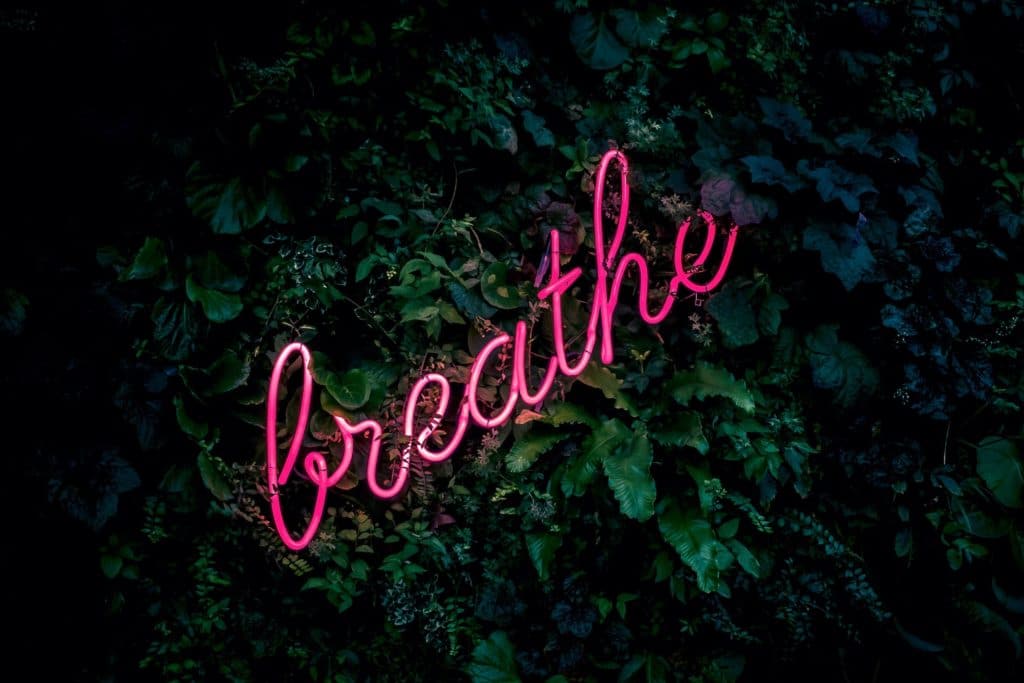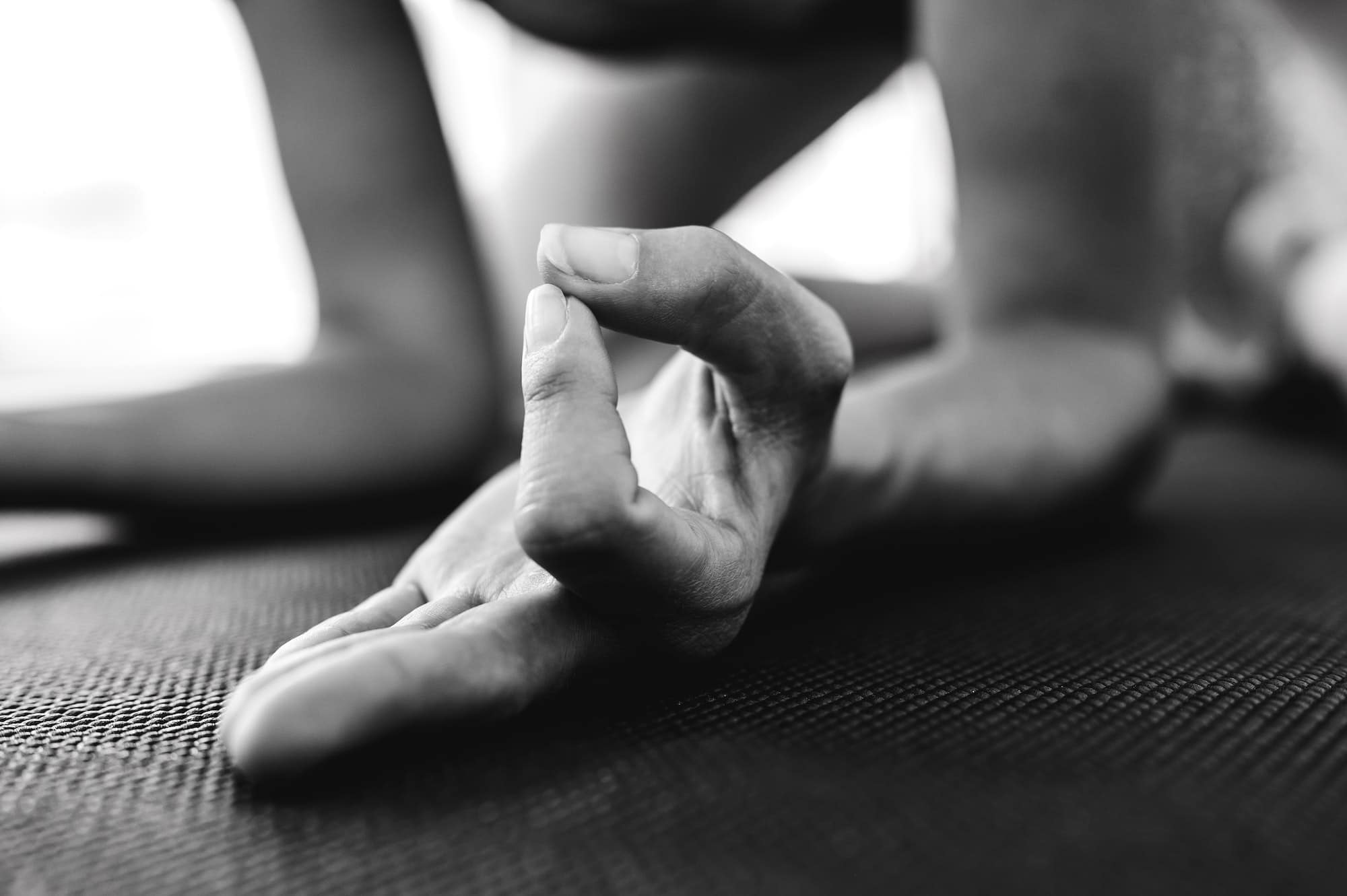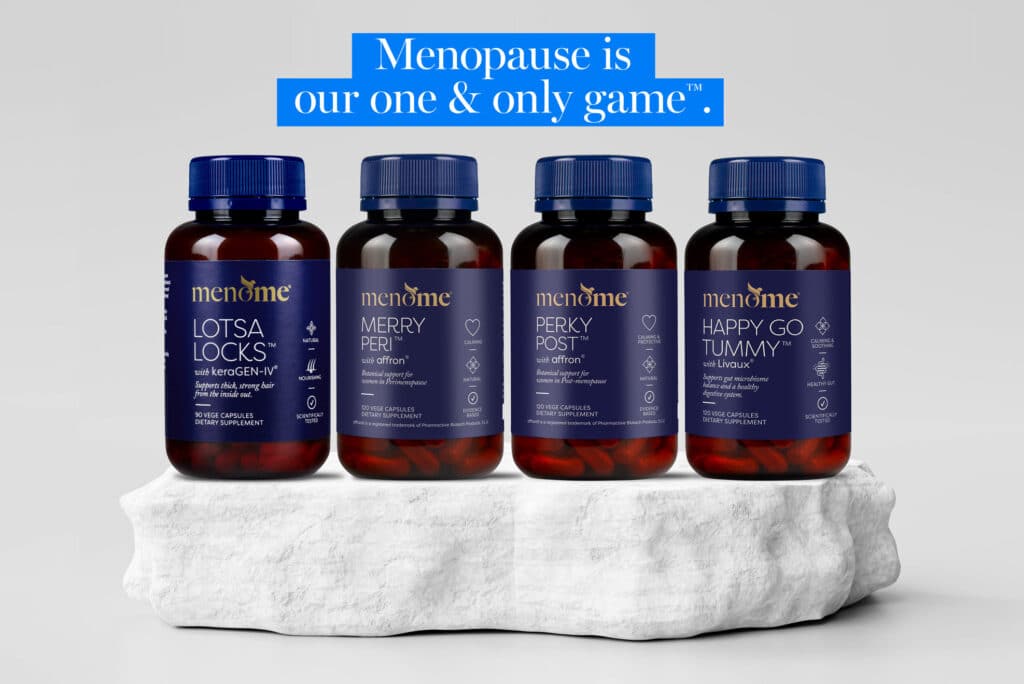Are there menopause remedies that you can concoct in the comfort of your own home? As a matter of fact, there are quite a few. So, happy days!
With this in mind, the key to finding the best DIY menopause remedies is arming yourself with information. As a result you can create your very own menopause relief toolbox.
Even so, there’s no silver bullet, and no matter what you choose it takes a multi-pronged approach for the best outcome.
Following are five tried and tested menopause remedies.
5 menopause remedies you can do at home
1. Breath work
Have you noticed a resurgence of breath work practices lately? This may be, in part, due to the pandemic. Or, perhaps a society that’s getting back to its roots.
Whatever the reason, when it comes to perimenopause, menopause and post-menopause paced breathing has proven to offer restorative benefits.
A study in the Menopause journal showed slow, deep, diaphragmatic breathing (which they call paced breathing) really does support symptoms.
Moreover, participants reported it was easy to do, they could do it most days and it reduced hot flushes. In summary, paced breathing performed twice a day seemed to be the most effective ‘dose’. So this is number one of our five menopause remedies.
Try it yourself:
- Slow the pace of your breathing by taking one breath every 10-12 seconds.
- Make sure that you breathe the from your belly and that the exhale is longer than the inhale.
- Do this for 15 minutes twice a day.
2. Sage tea
The second of our menopause remedies is sage tea.
There are many different varieties of sage and for the tea, we use the common garden form, Salvia officinalis. Commonly used as an ingredient in food stuffing, you’re probably familiar with its earthy flavour.
In addition to its culinary properties, sage is a folk medicine that’s been used through the ages. That’s because it has anti-microbial, anti-viral, anti-inflammatory, antioxidant and anti-hidrotic (sweat reducing) effects.
Several studies suggest sage may be effective in diminishing hot flushes and also anxiety. As an added bonus, research showed sage leaves to be helpful for bone resorption. In conclusion, adding a cup of sage tea to your evening may be helpful for relieving night sweats.
Indeed, we use a sage in Merry Peri® and Perky Post® because it’s got a long history of use in women’s health.
Tip: Less is more, so opt for up to three cups a day.
How to make sage tea:
- Take a handful of fresh sage (about 2 tablespoons) or 1 tablespoon of dried sage.
- Pop it into a sieve insert in your teapot or a tea diffuser.
- Pour over boiling water.
- Steep for approximately 10 minutes.
3. Essential oils
Another healing agent that’s been used since ancient times, essential oils are potent multi-taskers. According to Absolute Essential, they are “concentrated substances extracted from the flowers, stems, roots, bark, leaves or seeds of a plant. Furthermore, when oils are extracted with care their life force is maintained and can be recognised by human biology.”
You can breathe in their scent. This first goes to the brain through the olfactory system and the bloodstream via the breath. Alternatively, essential oils are absorbed through your skin (epidermis) from where they rapidly travel to your blood.
Some recommended essential oils for perimenopause, menopause and post-menopause support include:
- Bergamot – antidepressant 1
- Clary Sage – cortisol stability and hot flushes 2
- Lavender True – anxiety, feelings of wellbeing and hot flushes 3 4
- Geranium – hot flushes, depression, sexual function 5 6
- Citrus (lemon, lime, mandarin etc) – uplifting; help with alertness, reducing belly fat and improving body image. 7
- Neroli – stress, sexual desire and confidence.
It’s always best to consult with a qualified professional before using essential oils as it’s a complex science for the layperson.
How to use essential oils:
- Add a few drops to an ultrasonic diffuser (preferably ceramic) with water. Don’t burn the oils in a conventional candle burner unless adding water as they lose any therapeutic value.
- Pop some essential oils into your palms, rub them together and inhale to reap the full aromatherapy benefits.
- Use in a roll-on bottle mixed with a carrier oil. This way, it doubles as a fragrance and extends the effectiveness of the essential oils as they are volatile and evaporate quickly. Preferably use a neutral carrier oil such as coconut, olive or jojoba that won’t change the aroma.
- Combine a couple of drops of essential oils mixed with carrier oil to the soles of your feet, wrists or side of your neck. As a result, you’ll reap immediate benefits in accordance with your reflexology point and energy parts of your body.
- Spritz your linen with a few drops of essential oils.
- Add a couple of drops of relaxing lavender essential oil and Epsom salt. This will prepare you for a blissful pre-bed, detoxifying, hormone-rebalancing experience. Ensure you do not stay in any longer than 15 minutes as after this time you might reabsorb your toxins.
- One of our lovely ladies, Toni, adds essential oils to a tissue and pops them in her bra. She finds it very helpful. whether it’s to uplift or unwind! (Thanks for the tip lovely Toni!)
Note:
Essential oils are one of our favourite menopause remedies. They have powerful therapeutic properties so their use includes many dos and don’ts. For example, only apply selected, high quality essential oils directly to the skin otherwise diluted with a carrier oil. Finally, it’s a good idea to be mindful when using essential oils on children and pets. They can be immensely beneficial but please seek professional advice before proceeding.

Absolute Essential have developed the Mother & Child Safe Symbol for their products. This is an assurance of optimum safety for your little ones, so look out for that if you’re unsure.
4. Epsom salt baths
The fourth of our DIY menopause remedies are salty baths. Sometimes in the midst of researching scientific data, one finds a delightful story! Epsom salt is actually magnesium sulphate and was named after the town of Epsom in England in the 1600s. You can read the story here.
More of a magnesium than a salt, Epsom salt is different from table salt (sodium chloride). It’s been touted as a remedy for aches and pains and is a great detoxifier. In fact, it’s often claimed that an Epsom salt bath absorbs magnesium into the skin and creates a detoxifying process. However, there’s little scientifically backed and published evidence available.
Did you know? Many people are deficient in magnesium.
Many people are deficient in magnesium, a condition known as hypomagnesemia. Hypomagnesemia can be associated with high stress levels, rising blood pressure; blood sugar imbalance. Conditions such as headache, fibromyalgia, arthritis and chronic fatigue can also be attributed to hypomagnesemia. For this reason, it’s a good idea to eat magnesium-rich foods like leafy and cruciferous greens, dark chocolate (over 70%), nuts and seeds. You could also add a magnesium supplement to your regime. (We include magnesium in 55+.)
By the same token, we know that an Epsom salt bath feels ‘silkier’ than a standard bath. What’s more, it’s blissful! Add a few drops of a high-quality essential oil for de-stressing, designated me-time and sleep. Finally, before you drift off… add a carrier oil to make it all the merrier…

How to draw an Epsom salt bath:
- Fill the bath with warm water (you want it to be room temperature for soaking).
- Pour in 1-2 cups of Epsom salt and one tablespoon of coconut or other preferred carrier oil.
- Add a few drops of a relaxing essential oil like lavender or clary sage.
5. Yoga
To coin a cliché, last but not least on our list is yoga. The science is in on this time-honoured practice. In fact, this study showed it could increase estrogen levels in post-menopausal women. And this research explored the effects of yoga and sleep in women in midlife.
If you’ve never taken part in a yoga sequence it can seem daunting but it’s not only about seemingly impossible poses. Leave that for the masters and long-time devotees. Try beginning with small, incremental poses as you move toward more strength and fluidity. Incorporating stretching, breathing and resistance moves, yoga offers a full package particularly for women in perimenopause, menopause or post-menopause.
You can easily practise at home. Simply find yourself a space, roll out your mat and find a YouTube yoga channel that works for you. We’re big fans of Yoga With Adriene (along with nearly 10 million other followers) as she caters to all levels.
We hope you enjoyed these wonderful menopause remedies and incorporate one or all of them into your self care regime.
We’ve been managing our own symptoms for a number of years and have learned what works for us.
Here’s what’s in our toolbox:
- Merry Peri® and Perky Post®
- The 7 Pillars For Your Best Menopause
- Eating more phytoestrogens. Click here for a free list
- Flaxseeds (as above but worth noting individually) – 2 tablespoons of freshly ground flaxseeds per day.
- Movement
- Breath Work
- Salty Baths
- Essential Oils
- Sage Tea
Main photo by Fabian Moller @ Unsplash













